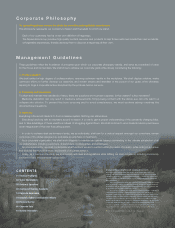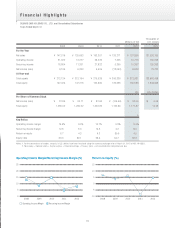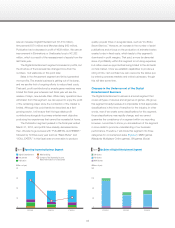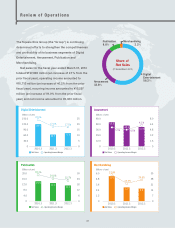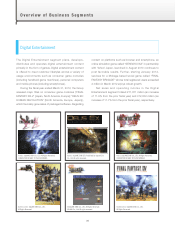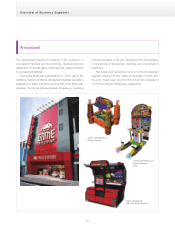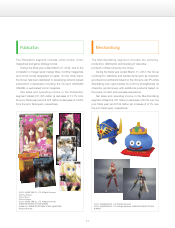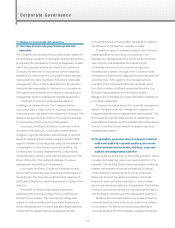Square Enix 2012 Annual Report Download - page 6
Download and view the complete annual report
Please find page 6 of the 2012 Square Enix annual report below. You can navigate through the pages in the report by either clicking on the pages listed below, or by using the keyword search tool below to find specific information within the annual report.
To Our Shareholders
Networking and mobile games), and HD games (High-Definition
games). These categories are how we organize internally rather
than classifications about markets or business models.
I have long expected MMO games to provide a stable source of
profit.
“FINAL FANTASY XI” has been continuing services for ten
years since its launch, and even if we consider all the server,
operational staffing, and maintenance costs in addition to the
development costs, the accumulated operating profit generated
by the title is close to ¥40 billion. As a single title, “FINAL
FANTASY XI” has had the highest level of contribution to our
profits. If successful, MMO is a genre where we can achieve
very high profitability. Also, the MMO game market itself has
been growing at a regular pace (Figure 3). At the same time,
development of MMOs is challenging, requiring large initial
investments and deployment of sizable support teams. MMOs
have an extremely high barrier to entry. Thus, our strategy is to
win the fierce battle among a small number of competitors,
creating a supporting rock for the Company’s profit.
To raise our chances for success, we adopted tactics that
concentrated our efforts on our most powerful IPs, FINAL
FANTASY and DRAGON QUEST, and we did not pursue other
MMO projects before the success of these two titles was
ensured. More concretely, “FINAL FANTASY XI” was to be
continued for as long as possible; “FINAL FANTASY XIV” was to
be launched in 2010 in Japan, North America, and Europe, and
then in China from 2011; and “DRAGON QUEST X,” a
DRAGON QUEST MMO, was planned for launch in 2012 in
Japan. However, we stumbled at the launch of “FINAL
FANTASY XIV.” Not only was the FINAL FANTASY brand
damaged, but the Company’s profit planning was undermined,
and deployment of development staff was also affected. This
was a challenging time for the Company, but I stood fast that
we should not change our original plan. In order to revive the
FINAL FANTASY brand and to regain trust in the MMO market,
we chose not to shut down “FINAL FANTASY XIV.” We are
treading the thorny path of continuously improving the existing
service while simultaneously working to renovate the game
fundamentally. Due to the initial stumble, most players had left
the game during the first six months, but more than a year later,
in early 2012, we began charging for the game, and we realized
that the game had regained more trust from our players than we
had expected. The number of players has increased since we
began charging. We have successfully brought the game back
on track. “FINAL FANTASY XIV” is eyeing a full comeback with
the release of its fundamentally revamped version between
2012 and 2013. I am confident that the title will be one of the
main profit generators for us. Furthermore, the development of
“DRAGON QUEST X” is proceeding smoothly toward its 2012
launch.
While taking two years longer than we originally planned,
this fiscal year we finally completed the work of correcting the
path of our business in the MMO category. I believe that we
have been able to demonstrate our strong commitment to the
brand, as well as the ability to take action in order to overcome
difficulties. By the fiscal year ending March 31, 2013, these
MMO games will provide more revenues and in the fiscal year
ending March 31, 2014, further contribute to our profit.
SN games refer to those with designs that allow customers to
have fun by connecting with each other, in other words, those
developed with social elements at their base. At this point, we
provide such games for feature phones, smartphones, and
browsers. Non-social games provided on these platforms are
also included in this category. This is because these games are
developed by the same teams. While MMO games are
supporting the Company as the rock providing stable source of
income, the SN game teams’ mission is to increase the upside
of our income as much as possible.
This area is a frontier for both the expansion of the user
Asia
Japan
Europe
North America
Source: DFC, IDG
(Billions of US$)
2001 2002 2003 2004 2005 2006 2007 2008 2009 2010 2011
12
10
8
6
4
2
0
MMO Game Market Size
Figure 3
04


